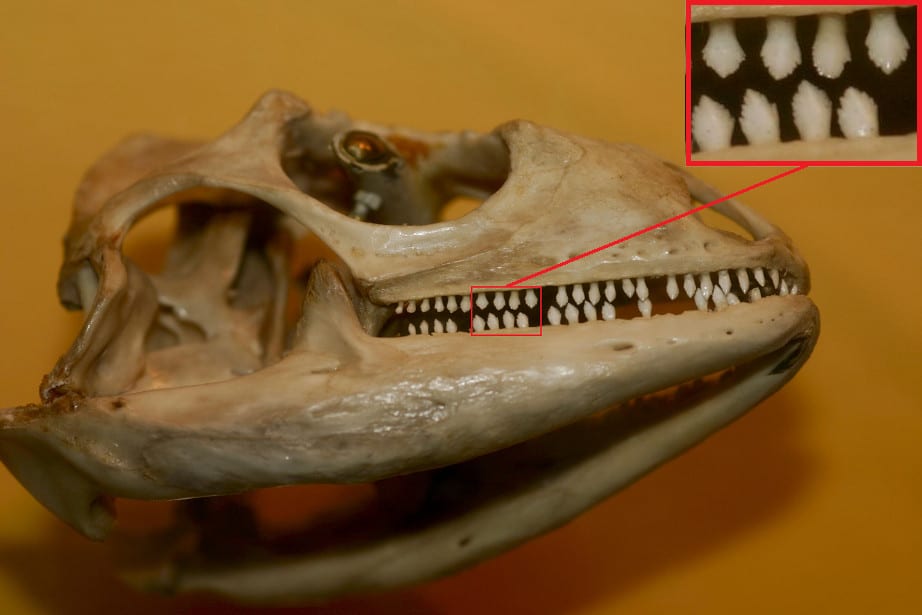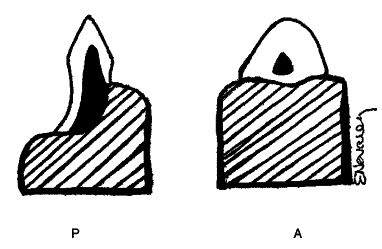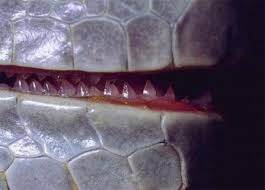Iguanas are fierce reptiles that kind of resemble dragons. However, since many people do not see iguanas in their day-to-day life (unless they have them as a pet) there are many questions surrounding these majestic beasts.
One topic that often comes up is their teeth. Many people wonder if iguanas even have them and if they do, whether they use them to bite. In addition, there are plenty of other questions that people have about their teeth as well.
If you’ve ever had any questions about iguana teeth, you’ve come to the right place. I’m going to go over everything you’ve ever wondered about this topic!

8 Facts about Iguana Teeth
1. Iguanas do have teeth
People often wonder if iguanas even have teeth.
The reason why so many people wonder if iguanas have teeth is that their teeth are not very large. Especially compared to some other reptiles like crocodiles they are very tiny.
In addition, they are almost transparent which makes them even harder to see and contributes to the myth that they do not have them.
Nevertheless, while their teeth are relatively small and translucent iguanas do have them and they’re very necessary parts of their anatomy.
Iguanas are born with teeth and as the animal grows larger their teeth get bigger too.
2. Their teeth are very small
Iguanas have smaller teeth compared to some other reptiles because they’re suited for a different purpose. The teeth of carnivorous reptiles like crocodiles are large and sharp because they use them to bite into and rip off the flesh of their prey.
Iguanas on the other hand are mostly herbivorous, meaning that the bulk of their diet consists of plant matter. They use them not to bite and tear off flesh but instead to tear and grind leaves so that they can eat them.
With that being said, they are not huge, but their teeth are not as small as they seem. They seem smaller because they’re largely transparent and the fact that reptiles, in general, have large mouths, which gives the appearance of smaller teeth.
3. Their teeth shed and grow back throughout their life
All reptiles have teeth, but there is an important distinction between the different types. Some reptiles are what’s called acrodont while others are pleurodont or thecodont.
The main difference between reptiles with pleurodonts and acrodonts is that the acrodonts are fused to the jawbone whereas pleurodonts are not directly attached to the jawbone. Pleurodonts shed and replace their teeth throughout the reptile’s life while acrodont species generally do not. It does happen that acrodonts grow back their teeth as the old ones are worn out, but it is not a continuous process as is the case with pleurodonts.

Some examples of acrodont reptiles are chameleons and bearded dragons. Examples of pleurodonts reptiles are geckos and indeed, iguanas.
Since iguanas are pleurodonts, they shed and grow their teeth back throughout their life. There are several advantages to having teeth that grow back throughout their life; for one, they’re much less susceptible to decay and disease.
Imagine how useful it would be if you could replace a tooth every time you had a cavity! Additionally, it’s less of a problem when one of them breaks off since it’ll grow back rather quickly anyway.
There is another interesting distinction between the different kinds of pleurodonts. There are 2 methods of regeneration in pleurodonts; one is called the “iguanid” and the other the “varanid” the difference between these two methods of regeneration is:
In the iguanid method, a replacement tooth grows into the pulp cavity of the functional tooth from below as the latter is resorbed. In the varanid method, a replacement tooth grows in an interdental position posterior to the functional tooth and no resorption is evident. The iguanid pattern is typical of most pleurodont squamates and is believed to be primitive, whereas the varanid pattern is found only in varanoid lizards and snakes
4. Iguanas have 100 teeth
The iguana’s mouth is divided into 4 quadrants with each of these quadrants having between 20-30 teeth depending on the iguana. Quick math shows that they thus have on average 4*25 = 100 teeth in their mouth.
5. They produce 500 teeth every year
As we’ve gone over before, iguanas shed and replace their teeth constantly, this happens up to 5 times a year meaning that an average iguana produces around 500 of them every single year!
For owners of pet iguanas, it’s very common to find a shed tooth in the enclosure since they shed so many of them every year.
6. They can use their teeth to bite
While the primary purpose of the iguana’s teeth is to eat plants, they can and do use them in self-defense to bite.
Their bites are quite powerful and can do a lot of damage. You always have to be careful not to get bitten when handling an iguana because there’s a high chance that the bite wound will get infected and usually it requires stitches.
To learn more about how to avoid getting bitten check out this post.
Keep in mind that they usually do not bite in order to harm you but rather in self-defense. They only bite when they feel threatened and see no other way out.
An important thing to know about iguana bites is that their saliva contains the salmonella bacteria, which makes it especially important that you clean the wound thoroughly if you do happen to get bitten.
If you’re the owner of a pet iguana it’s therefore very important that you have antiseptic at hand at all times.
They usually bite more than once, and since they have sharp, serrated teeth their bites will go deep into the flesh. Their teeth are so strong that they’re capable of cracking coconut husks so your skin is no match for their jaws.
They can bite all the way through to the bone and the wounds they leave are not pretty. Visible bones and tendons are a very possible result of an iguana bite.
As I’ve mentioned, iguanas shed their teeth and their teeth may fall out when biting and get stuck in your hand meaning they will have to be flushed out. Not something you’ll want to have happen!
You should also not pull your hand away immediately after being bitten because this will just make the wound worse since you will tear the flesh.
7. Their bites are very slightly venomous
It has long been assumed that iguanas do not produce venom. However, recent research has shown that this is not the case and that they do indeed produce a mild venom (source).
Iguanas do produce venom, but only a very small amount of it that’s not a large threat. The bigger threat is their serrated teeth and the bacteria that live in their mouth.
It is quite interesting though that for over 80 years it was assumed that they do not have venom when research from 2005 has proven that they do have it. Just goes to show how much we still don’t know about the animals around us!
8. Their teeth have a unique shape
I’ve already stated that their teeth aren’t huge and almost transparent but that alone does not give a very comprehensive description of what their teeth exactly look like.
The best way to visualize their teeth is to imagine a bread knife bent into a half-moon shape with the serrated points facing outward. If you’re struggling to visualize that, this drawing might be of use:

To see what their teeth look like on an actual iguana, check out this picture:

Conclusion
Iguanas do have teeth, in fact, they have over 100 serrated teeth in their mouth and regrow them over 5 times each year! You might not be able to see them very well because they’re almost transparent but they’re definitely there.
They mostly use their teeth to eat plants but they can also use them to bite in self-defense. Their bites are very powerful and can cause a lot of damage.
- How Long Do American Eskimo Dogs Live? Important Factors and Care Tips - September 29, 2023
- Do American Bulldogs Need Grooming? Essential Tips and Care Guidelines - September 29, 2023
- Do Bengal Cats Enjoy Playing? Essential Tips for Keeping Them Active - September 29, 2023